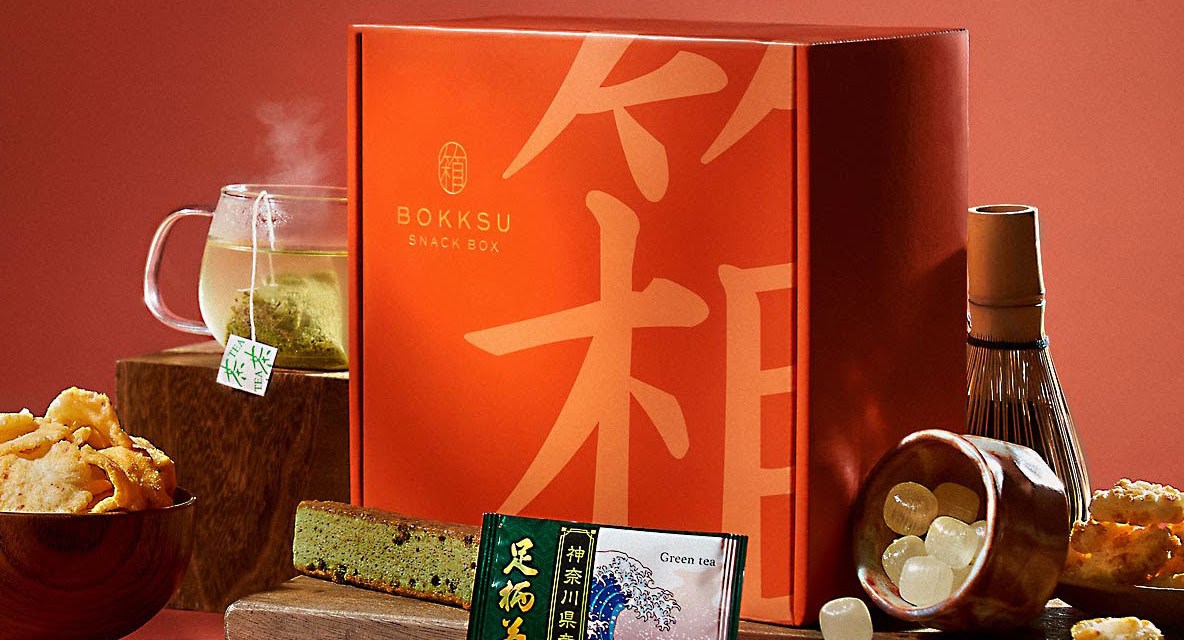Japanese snack startup Bokksu acquires competitor Japan Crate

Bokksu, a seven-year-old startup known for its Japanese snack subscription boxes, announced on Wednesday that it is acquiring a competitor called Japan Crate. Terms of the deal were not disclosed.
Bokksu CEO and founder Danny Taing said that as a result of this deal, Bokksu will be able to significantly expand its retail distribution. Bokksu has only previously dabbled with selling its products through a handful of independent retailers. Japan Crate, meanwhile, sells through over 5,000 locations, in addition to its own website. Some of Japan Crate’s retail partners include World Market, Hot Topic and FYE.
Bokksu’s acquisition of Japan Crate comes amid a year of consolidation in the retail industry, among companies both big and small. Established players are snapping up startups that have struggled to obtain funding. Most recently, Ariela & Associates International, a licensee of Fruit of the Loom, acquired Parade. And in other cases, one well-funded startup is joining forces with a competing startup to scale more quickly than each could on their own. According to Taing, acquiring Japan Crate also fits into Bokksu’s quest to develop a greater variety of services and offerings, and position the company as more of a membership, rather than a subscription service.
“New ideas and concepts have been the core of both Japan Crate’s and Bokksu’s missions, and by joining forces, we’re confident in our continued growth and innovation,” Japan Crate CEO Hank Rao said in a statement.
When asked if there were any macroeconomic factors or financial challenges that led to the deal, Taing pointed to the fact that Bokksu was venture-backed, and Japan Crate, founded in 2014, was not. In January of 2022, Bokksu raised a $22 million Series A at a $100 million valuation, which simply gave the company more capital for deals. Meanwhile, operating a brand without taking on outside funding has become more difficult amid inflation and rising interest rates.
“Japan Crate has done a remarkable job growing to where they are fully bootstrapped,” Taing said. “But they’ve been resource strapped for a while.”
Bokksu, founded in 2015, started out with a monthly snack subscription service, where customers could get access to a variety of Japanese snacks and candies they likely couldn’t find in the U.S. Like most other modern subscription services, Bokksu offers a variety of plans, while also promoting the ability to cancel anytime. People who sign up for the 12-month subscription plan, for example, $39.99 a month. When Bokksu announced its series A last year, the company said that it had delivered over one million subscription boxes.
As to what Bokksu gets out of the deal, one of the biggest benefits is immediate retail distribution. “For the last seven-plus years since I started the company, we’ve been trying to break into retail ourselves,” Taing said.
Taing said that Japan Crate also taps into a different demographic than Bokksu. “Generally speaking, the Bokksu snack box appeals to like a older female foodie audience or a traveler.” Meanwhile, he said the Japan Crate brand is geared toward a younger, male gamer type of audience.” Japan Crate is known more for collaborations with anime studios and video games. For example, Japan Crate did a limited-edition snack box tied to the video game Persona 5. “Those drive a lot of fervent passion from the fans of those licenses and brands,” Taing said.
Right now, the plan is to keep both Bokksu and Japan Crate operating as separate brands. The goal, Taing said, is to position Bokksu as more of a membership model that offers people a variety of ways to buy and discover new Japanese products. For example, a few years ago the company launched Bokksu Market, which now operates as an online Asian grocery store that delivers pantry items, frozen foods, beverages and more. Last month, Bokksu also launched a partnership with Sanrio to create a Hello Kitty-themed snack box.
Brendan Witcher, vice president and principal analyst at Forrester, said that while subscription boxes have been operating successfully for decades – pointing to Harry & David is one example – he said that often, the target audience for subscription services is much narrower than startups think.
He pointed to Blue Apron as one example, which has struggled on the public markets and now has a market capitalization of just over $40 million. “People who care a lot about food don’t sign up for Blue Apron. People who don’t care about food at all, don’t sign up for Blue Apron,” Witcher said. It’s that group right in the middle – people who care about food, but not enough to become a chef.”
By contrast, he thought positioning a service as more of a membership is “a brilliant move,” because membership programs typically have “way more stickiness” than a subscription service. He cited Amazon Prime as one example, where people sign up for it to get multiple benefits.
“Subscription services are a great way to bring the brand into people’s lives, but it’s not the way to sustain,” Witcher said.
In the immediate term, Taing said that the focus now is on integrating Japan Crate into Bokksu, and revamping internal aspects like Japan Crate’s supply chain. In early 2024, Bokksu also plans to go out and raise a Series B.
“We’re planning to continue moving toward more of a membership model…by creating these different, but related, brands and platforms and channels,” Taing said.
This story has been updated to note that Bokksu was founded in 2015, not 2016.
